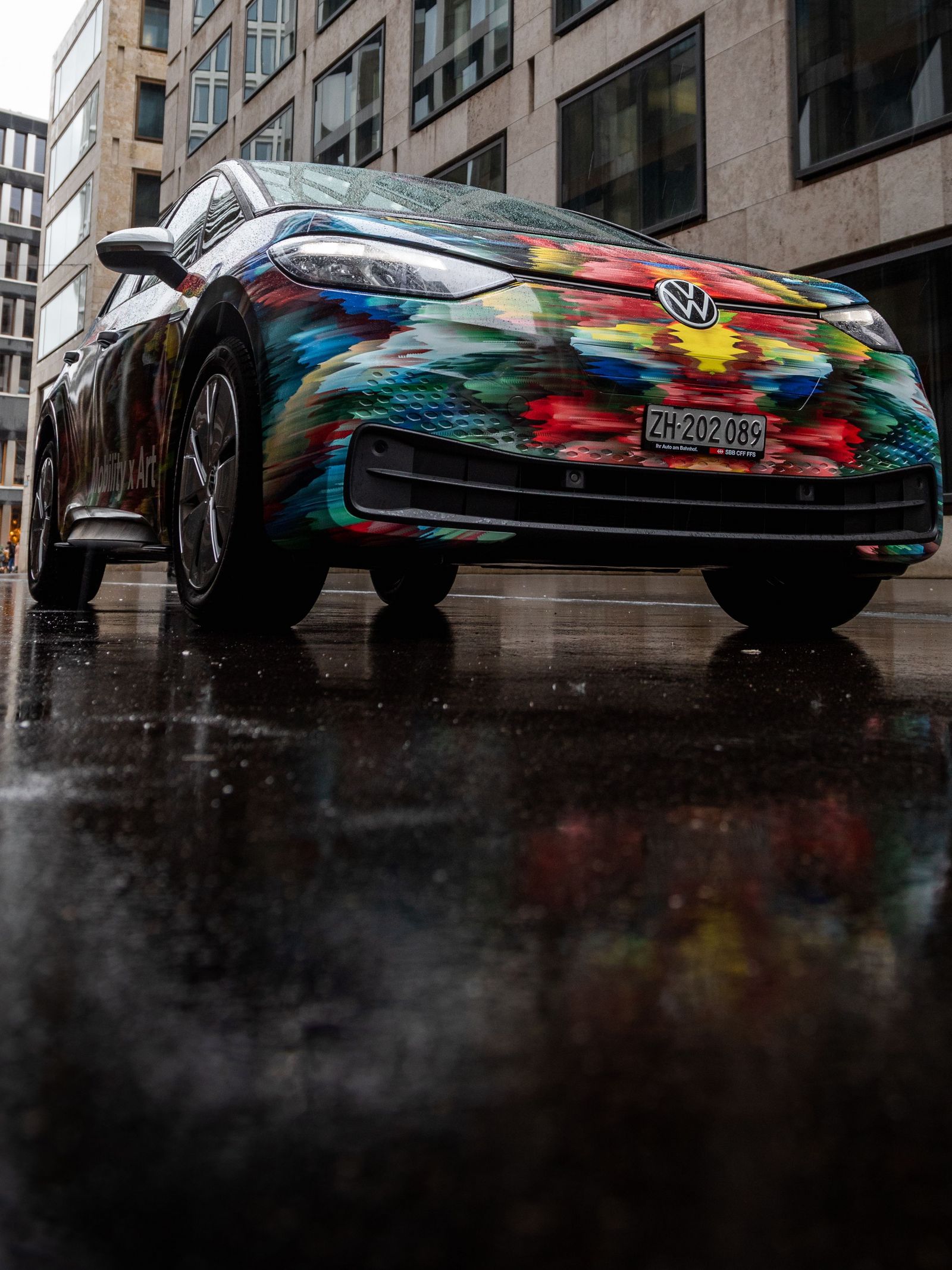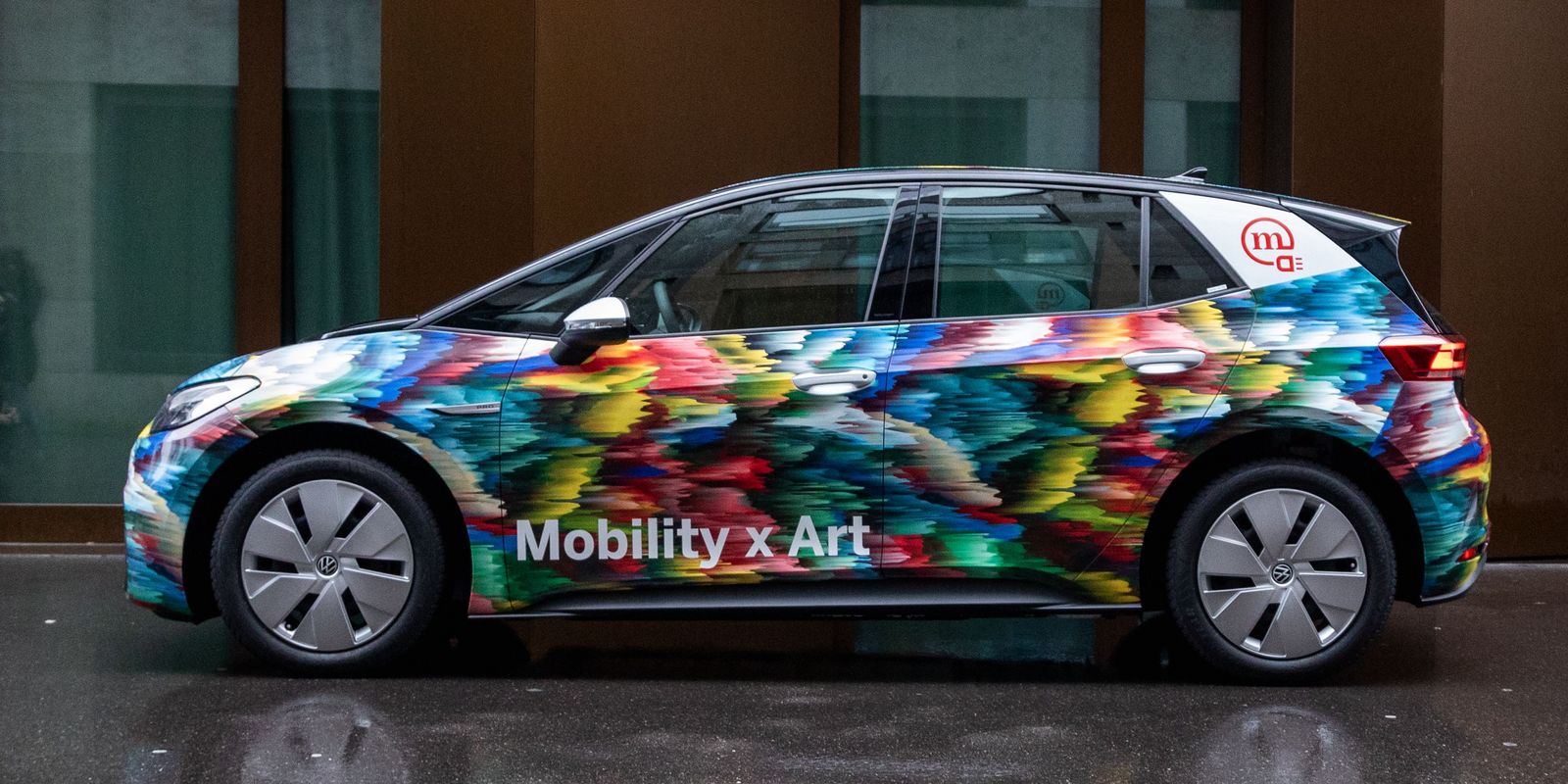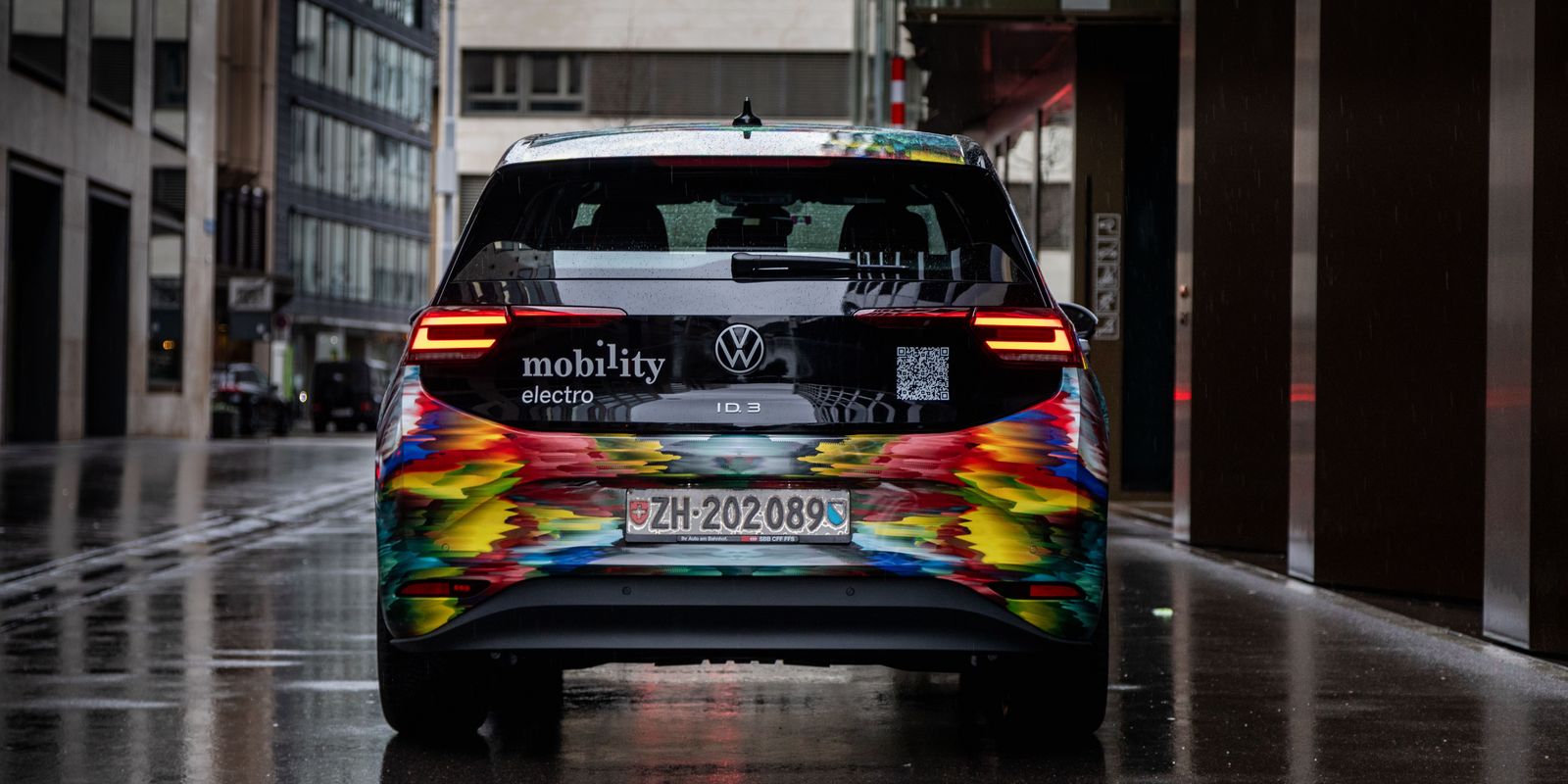Fill a car with meals, food and tampons and distribute it all to homeless people” – this was the promise that won Cristina the Watson-Young competition. To what extent was this idea incorporated in the car’s design?
Initially, the plan was to actually do something with images of food. But we quickly realised that an abstract design was better suited to a car. We wanted to do something cheerful and colourful that would stand out visually.
« We quickly realised (...) that an abstract design was better suited to a car. »
How did you develop the design?
Due to the pandemic, I didn’t meet any of the people involved in the project face to face – not even Cristina. Instead, she searched my Instagram account for the works she liked best that might suit the project. I then sent some suggestions, which she subsequently commented on by text message, and eventually we agreed on a motif.

And how did you actually apply the motif in practice?
I painted the images using stark contrasts and without white spaces. In addition to the Mobility red, I used yellow, green and blue to give a colourful and vibrant effect. Afterwards, I digitally dissected the images using the Glitch app. I always proceed very intuitively and go on modifying images until a fascinating new look emerges that appeals to me. In this case, the idea was to apply areas of colour that looked as if they were flowing backwards as the car travelled faster.

« Going from a flat image surface to a 3D design with curved surfaces was definitely a challenge. »
You normally work with flat surfaces, but on a car everything is curved. Was that particularly difficult?
Going from a flat image surface to a 3D design with curved surfaces was definitely a challenge Firstly, because I usually work in smaller formats and I don’t have much experience of large files. Secondly, the collaboration on this project was entirely virtual. Normally I work with Bernese printer and gallery owner Tom Blaess when I do large prints. I’m able to assess and discuss the results on site and do revisions if necessary. For this project we used foils that I’d never seen before.
« Every project presents its own distinct challenge because you have to approach the work very differently depending on the format and the space. »
The whole project took five weeks. Was it stressful?
Everything had to happen very quickly, but stress levels are always high when there’s a new challenge. You’re unfamiliar with the processes and unsure whether the artistic idea can even be put into practice. But I always feel electrified when I get to do something completely new. Every project presents its own distinct challenge because you have to approach the work very differently depending on the format and the space. And yes, that is stress, but it’s so-called eustress – a positive form of stress that drives you. This energy is actually one of the reasons I became an artist.
Did you learn anything that might be of use to you in your future work?
Yes, especially in terms of working with large formats. This is very helpful, because museums like works to take up more space visually.

What is your relationship with cars in general?
There are brands that I think are great and brands that I’d rather not own. Very old cars also exert an attraction on me because they trigger a lot inner images. But I’ve always lived in the city since I was a student, and although I do have a driving licence, I’ve never actually owned a car. To me, the fact that I don’t need a car on a day-to-day basis has to do with quality of life.
So you never drive a car?
During the pandemic, I did miss having a vehicle of my own to use. That’s why I now want to take up driving again – electrically of course – so I’ll probably take a few driving lessons. I might borrow my parents’ car, but Mobility is an option too, of course.
While we’re on the subject: the Mobility car you designed is currently out and about in Zurich, and you live in Bern. Don’t you think it’s a shame you haven’t seen it live on the road yet?
Yes, absolutely! But I’m sure it’ll be in Bern some time this year, then I can drive it too! Either way, it would be great if passers-by or drivers took photos when they see the car on the road. Then at least I’d be able to see it virtually again and again, each time against a different backdrop.
If you’d like to fulfil Gigga’s wish, feel free to share pictures of the four-wheeled work of art on Instagram.

Your comment